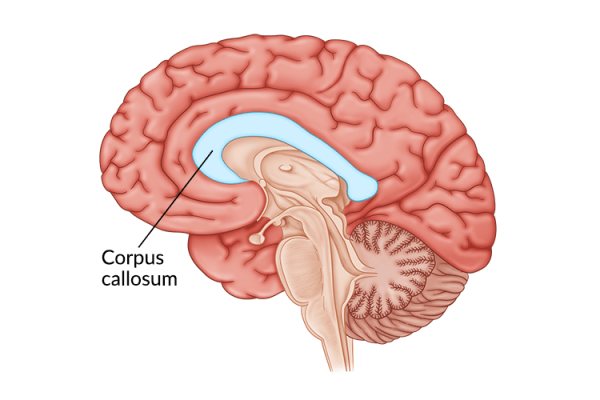While head injuries can often be treated conservatively, approximately 27% of individuals with a traumatic brain injury must undergo emergency surgery to prevent further brain damage. Doctors have several surgical options, depending on a number of factors.
This article outlines five of the most common types of surgery after head injury. Additionally, an outline of which brain-injury related conditions may require surgical intervention is also included.
Use the links below to jump directly to any section:
- Determining whether surgery is recommended
- Conditions likely to require surgery
- Types of surgery for head injury
- Recovery
Determining Whether Surgery after Head Injury is Recommended
Besides damage to the brain itself, certain head injuries can lead to severe complications that may have life-threatening effects. Some of these complications, such as infections, can be treated with medications. But some will demand emergency surgery.
Conditions that require surgery after head injury include:
- Hematomas. These are collections of blood that pool outside blood vessels. Hematomas can occur in the space between the skull and the outer layer of the brain, between the outer layer and the brain tissue, and within the brain tissue itself.
- Hydrocephalus. This occurs when cerebrospinal fluid (CSF) accumulates in the ventricles (cavities in the brain that produce CSF). The accumulation of fluid causes the ventricles to swell, which puts pressure on the brain tissues and leads to further damage.
- Skull fractures. These usually accompany penetrating brain injuries and can tear the protective covering on the brain. The tears can also allow bacteria and air into the brain, causing serious infections.
- Intracerebral hemorrhages. Hemorrhages occur when an artery in the brain bursts, causing bleeding in the brain tissue. This is a life-threatening emergency that requires swift treatment to limit damage.
Following a brain injury, individuals are regularly evaluated and monitored to determine the proper course of treatment. This may include examining characteristics such as intracranial pressure, Glasgow Coma Scale score, and severity of brain bleeds. Individuals who have sustained a severe brain injury are most likely to require surgical intervention.
To help determine the need for monitoring and further intervention, the Brain Injury Guidelines (BIG) were developed. These guidelines divide brain injury survivors into three categories based on specific factors, such as neurological function, intoxication at time of injury, presence of a skull fracture, and the type/severity of injury sustained.
Looking at these guidelines, almost all individuals who require surgery after head injury fall into the most severe category, BIG 3. In fact, those who fall into BIG categories 1 and 2 rarely even require a neurosurgical consultation. Therefore, examining these criteria can give doctors an idea of whether or not individuals are likely to require neurosurgical intervention.
Conditions Likely to Require Surgery after Brain Injury
The types of surgery for head injury vary depending on which factors must be addressed. Surgery may be recommended for a number of reasons, including:
- To relieve pressure inside the skull
- To repair skull fractures
- To remove debris, dead brain tissue, or hematomas
Of note, many individuals who have sustained a head injury may also require surgery to other areas of their body that have also sustained trauma. However, this article focuses specifically on the surgeries that may be required to address complications directly related to head injuries.
Conditions that may require surgery after head injury include:
- Hydrocephalus. This occurs when cerebrospinal fluid (CSF) accumulates in the ventricles (cavities in the brain that produce CSF). This accumulation of fluid causes the ventricles to swell, which puts pressure on the brain, leading to further damage.
- Skull fractures. These usually accompany penetrating brain injuries, in which an object goes through the skull into the brain. This can tear the protective covering on the brain, allowing bacteria and air to enter the brain and increase the risk of infections.
- Intracerebral hemorrhages. When an artery in the brain bursts, it causes bleeding in the brain tissue. This is a life-threatening emergency that requires swift treatment to limit damage.
- Hematomas. These are collections of blood that pool outside blood vessels. Hematomas can occur in the space between the skull and the outer layer of the brain, between the outer layer and the brain tissue, and within the brain tissue itself. Individuals with hematomas are among the most likely to require surgery after head injury.
These conditions may be diagnosed and monitored using imaging, such as CT scans or MRIs, to determine the extent of the damage. Repeated imaging may also be used to assess any possible changes and inform decisions regarding the need for surgery.
Types of Surgery for Head Injury
If it is determined that an individual requires surgery, they will most likely undergo surgery within a few hours after their injury to prevent permanent damage. However, the optimal timing for surgical intervention after brain injury is debatable. Some doctors may opt for a more conservative approach initially before recommending surgery at a later time.
Below are a few of the types of surgery for head injury that may be recommended:
1. Craniotomy with Open Surgery
A craniotomy is a surgical procedure that removes a section of the skull temporarily for access. Craniotomies are performed for a variety of reasons. But this is one type of surgery for head injury that is used to address a hematoma. If a hematoma is large enough, the neurosurgeon will remove a section of the skull to drain the hematoma.
A craniotomy also allows the brain, if it is swollen, to bulge out of the skull and reduce intracranial pressure (ICP). Reducing ICP is crucial for preventing further damage.
Once the hematoma is drained, the doctors can then directly operate on the brain to repair any broken blood vessels. This will stop further bleeding and swelling.
In addition, hematomas that are smaller than one centimeter can be treated with an aspiration procedure, a far less invasive surgery than a craniotomy.
During this procedure, your surgeon will drill a small hole called a burr hole into your skull. Then, the surgeon will place rubber tubes into the holes, which allow the blood from the hematoma to drain out.
2. Decompressive Craniectomy
If intracranial pressure remains elevated and does not respond to medication, doctors will need to perform an emergency decompressive craniectomy. Like the open craniotomy surgery discussed above, a craniectomy involves the removal of part of the skull. This gives the swollen brain room to expand without causing any more damage to it.
Surgeons may also use craniectomies to remove open skull fractures, which prevents the fracture from penetrating the brain tissue. These surgeries are risky, however, so doctors prefer to use them as a last resort. Other measures doctors might try before choosing a craniectomy can include:
- Medication to decrease swelling
- Oxygen therapy
- Therapeutic hypothermia
They also might try aspirating a hematoma if that is an option. If the aspiration does not work, then they will need to perform a craniectomy so that brain tissue is not damaged by pressure against the skull.
3. Ventriculoperitoneal Shunt Surgery (VPS)
VPS surgery involves the surgical insertion of a drainage system, called a shunt, to address post-traumatic hydrocephalus. A shunt is a long, flexible tube with a valve at one end that drains fluid from the brain at a constant rate.
For the shunt to work properly, one end is placed in one of the brain’s ventricles, while the other end is tunneled under the skin to another part of the body, usually the abdomen. The CSF then drains into the abdominal cavity, where it is absorbed by the body.
Most people with hydrocephalus will need a shunt system for the rest of their life and must be monitored regularly.
4. Endoscopic Ventriculostomy
When an excess of cerebral spinal fluid (CSF) collects in the ventricles of the brain, as the ventricles expand, pressure builds up and the brain pushes up against the skull. This can damage brain tissue. In this case, Endoscopic Ventriculostomy creates an opening in the floor of the ventricle to allow cerebral spinal fluid to flow out relieving pressure on the brain. This type of surgery for head injury is primarily used to treat hydrocephalus.
During this procedure, your surgeon inserts a small video camera into your skull to see directly inside your brain. The surgeon then makes a hole in the bottom of one of your ventricles, which allows CSF to drain out of the brain.
A ventriculostomy can also be used to drain a hematoma that may have formed in one of your ventricles.
Of note, the use of this type of surgery for head injury is still being studied. Some recommend using a ventriculoperitoneal shunt surgery (VPS) as described above first, then using endoscopic ventriculostomy as a last resort.
5. Cranioplasty
Finally, patients will sometimes have to undergo reconstructive surgery of their skull, also known as cranioplasty, after a craniectomy. These surgeries mostly occur after the person recovers from their craniectomy.
During a cranioplasty, the skull vault is repaired by inserting plastic or metal plates. Sometimes, if the damage is not too severe, the person’s own skull bone can be reinserted.
Cranioplasty helps the person avoid recurrent brain damage, protects them from seizures, and relieves trephine syndrome, which sometimes occurs after the removal of a large skull bone.
Signs and symptoms of trephine syndrome include:
- Headaches
- Cognitive Difficulties
- Motor weakness
- Dizziness
- Seizures
- Intolerance of vibration and noise
- Loss of motivation and concentration
- Anxiety
- Fatigue
Cranioplasty can also help increase cerebral blood flow and improve brain metabolism.
Recovery from Surgery After Head Injury
Most people who undergo brain surgery are already in critical condition because of their injury. Therefore, the length of their recovery depends on how severe their brain injury was.
Once they regain consciousness and recover from surgery, individuals should start participating in rehabilitation as soon as possible. Some treatments may include:
These therapies can boost recovery by frequently stimulating the brain through consistent and repetitive practice. This can allow the brain to adapt and repair itself, promoting recovery.
The more frequently they practice these therapies, the faster they will make a good recovery.
Types of Surgery After Head Injury: Understanding the Options
Surgery after a head injury can save a life if performed early enough. While those with mild to moderate brain injuries generally do not require surgery, undergoing surgery can be a life-saving treatment for individuals with severe brain injuries. The type of surgery for head injury depends on the complications experienced after an injury.
For example, if your TBI causes a brain hemorrhage, your doctor might perform an open craniotomy to stop the bleeding. On the other hand, if the head injury triggered swelling in the ventricles, you may need a shunt or even a craniectomy.
After the surgery, you will require prompt rehabilitation to ensure that you heal correctly. And ultimately, the sooner you begin therapy, the better chance you will have of making a full recovery.










